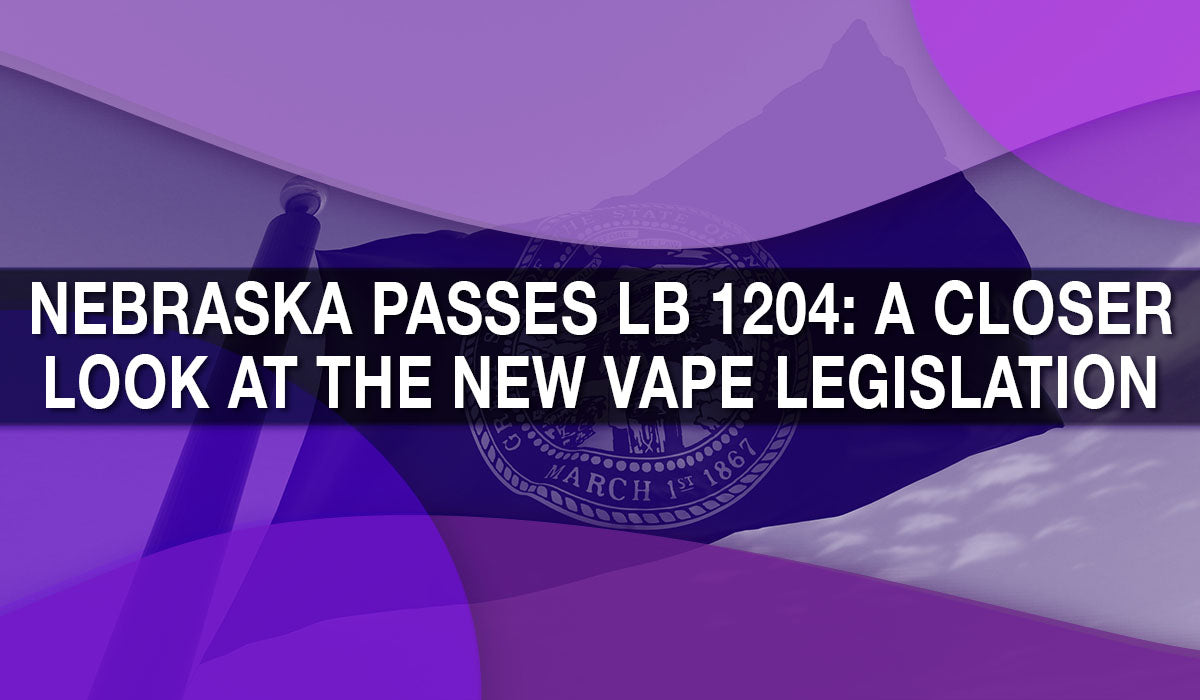
Celebrating Harm Reduction Efforts: A Global Tribute to Vaping
On Thursday, May 30, the vaping community around the globe will unite to celebrate a movement dedicated to providing superior alternatives to traditional smoking. This significant date is carefully chosen, falling just one day before the World Health Organization’s (WHO) World No Tobacco Day. The proximity of these dates is intentional, highlighting the crucial role that vaping and other alternative nicotine products play in helping people who smoke transition away from combustible tobacco. This year the World Vapers’ Alliance will focus on the theme of the “Misperception Epidemic” With the goal of exposing how widespread misinformation is blocking smokers from switching to non-combustible nicotine alternatives. By tackling misconceptions head-on, the WVA looks to empower individuals with evidence-based knowledge and spark meaningful conversations about how vaping can fast-track us to a smoke-free world.

The Significance of Harm Reduction
Harm reduction is a public health strategy aimed at reducing the negative consequences associated with certain behaviors, particularly those that cannot be entirely eliminated. In the context of smoking, harm reduction includes promoting alternatives that satisfy nicotine cravings without the tar and thousands of harmful chemicals found in traditional cigarettes.
The treatment vaping receives as a harm reduction tool varies greatly by country. The policies promoted by the UK’s Actions On Smoking and Health are quite different than the restrictions placed on vaping in the U.S.:
Tobacco harm reduction encouraging adult smokers to use e-cigarettes is supported by the UK Government, the MHRA and NICE, as well as by leading UK health organizations including ASH. The UK’s regulatory approach is to encourage their use for quitting while minimizing the risk of any new nicotine addiction in children. An independent report commissioned by Public Health England and the Office for Health Improvement and Disparities, describes cigarette smoking as, “The largest single risk factor for death and years of life lived in ill health” and “the second most important risk factor for death and disability adjusted life years globally.”
For this reason, their policy is simple and humane, “Alternative nicotine delivery devices such as vaping products can play a vital role in reducing the huge health burden caused by cigarette smoking.” They also found evidence that, “Non-tobacco flavors, particularly sweet flavors, may play a positive role in helping people switch from smoking to vaping.” Notably, the existing evidence does not provide, “A clear understanding of how flavors in vaping products are associated with young people taking up or stopping smoking.”
Deadly Misconceptions and Misinformation About Vaping
Sadly, the non-stop lobbying of nicotine abstinence zealots, the tobacco industry and ill-informed American based lobbying groups hellbent on vaping prohibition or at the least banning the flavors and products popular with adults have made their way across the pond. A University College London study found, “Half of smokers in England wrongly believe vaping is more harmful or as harmful as smoking.”
Their research team found, “Public perceptions of e-cigarettes had worsened considerably in the past decade.” A full 57% of respondents said they though vaping was equally or more harmful than smoking while only 27% thought e-cigarettes were less harmful.
The Lead author of the study, Dr Sarah Jackson of the UCL Institute of Epidemiology & Health Care, said:
“This misperception is a health risk in and of itself, as it may discourage smokers from substantially reducing their harm by switching to e-cigarettes. It may also encourage some young people who use e-cigarettes to take up smoking for the first time, if they believe the harms are comparable.
“Better communication about the health risks is needed so that adults who smoke can make informed choices about the nicotine products they use.”
Evidence of Harm Reduction Research made available in the Royal College of Physicians Executive Summary, found that vaping has emerged as one of the most effective harm reduction tools available today. Numerous studies have shown that e-cigarettes are significantly less harmful than combustible cigarettes.
This dramatic reduction in harm is due to the absence of combustion in e-cigarettes, which means users are not exposed to the dangerous tar and chemicals that cause the majority of smoking-related diseases.
Public Health England, for example, has stated that vaping is at least 95% less harmful than smoking traditional tobacco and hosts the Vaping to Quit Smoking resource page. Keep in mind that the UK’s health system in publicly funded and taxpayers have skin in the game and their support of e-cigarettes for harm reduction and cessation is unwavering. Their scientists are foremost experts in the field and are creating an expanding body of evidence in favor of vaping.
The UK serves as a beacon of hope to smokers and a case study as to what could be accomplished if their humane and science based public health policies were implemented globally.

Science Behind Cessation
For many smokers, vaping has provided a viable pathway to quitting smoking altogether. The ability to mimic the physical and sensory aspects of smoking, along with the option to gradually reduce nicotine levels, makes vaping an attractive option for those looking to quit. This has been the reality for millions of vapers but a 2019 peer reviewed study published in the gold standard New England Journal of Medicine Study replaced anecdotes with hard evidence in support of vaping.
This study found, “E-cigarettes were more effective for smoking cessation than nicotine replacement therapy (NRT).” NRT products include patches, gums, lozenges and are the only accepted cessation tool in the United States. They are also manufactured by the pharmaceutical industry and backed by formidable lobbying firepower.
In the ensuing years, dozens of studies have compared NRT and vaping. In the winter of 2024, Cochrane Database of Systemic Reviews compiled the results. Looking at 88 previous studies that included 27,235 participants they found, “High certainty evidence that e-cigarettes, which allow users to “vape” nicotine instead of smoke it, lead to better chances of quitting smoking than patches, gums, lozenges or other traditional NRT.”
The results were unambiguous. Jamie Hartman-Boyce, study author and Cochrane editor, stated:
“We have very clear evidence that, though not risk free, nicotine e-cigarettes are substantially less harmful than smoking. Some people who haven’t had success in the past with other quit aids have found e-cigarettes have helped them.”
The study found that for every 100 smokers attempting to quit, 8 to 10 would be expected to succeed by using nicotine e-cigarettes versus 6 successful cessations using nicotine replacement therapy.
The Deadly Toll of Anti-Vaping Lobbyists
Sadly, the widespread legislative and regulatory assaults on vaping and alternative nicotine products are beginning to take their toll on public health. An FDA sponsored study found that vape flavor bans increase cigarette sales. The alarming results of this Yale School of Public Health study can be viewed here.
Former FDA Chief Scott Gottlieb, no ally of the vaping industry, noted with alarm that smoking cessation rates are beginning to stall as American adults are denied access.
Declines in smoking rates have started to stall ; if we're going to help more adults quit combustible cigarettes we have to embrace harm reduction and offer adult smokers modified risk nicotine products that don't have same risks as combusting tobacco 1/2 https://t.co/l3a1zmffqc
— Scott Gottlieb, MD (@ScottGottliebMD) February 26, 2024
A Global Celebration of Progress
The celebration on May 30 serves as a global acknowledgment of vaping as a positive force. A study by the Nicotine and Tobacco Research Team at the National Institute on Drug Abuse examined the proportion of smoking produced mortality that e-cigarettes might eliminate:
“Nearly complete transition from smoking to e-cigarettes within a decade in the United States could avoid the premature loss of 6.6 million lives and save 86.7 million life-years by the end of the century.”
The progress made in harm reduction and the lives improved by the vaping industry are often vilified and downplayed. Today is a day to recognize the scientific advancements, policy changes, and community support that have collectively contributed to reducing smoking rates worldwide.
Events and activities on this day may include:
Educational Seminars: Informative sessions to educate the public and policymakers about the benefits of vaping and the latest research supporting vaping as an alternative product.
Community Gatherings: Bringing together vapers, advocates, and health professionals to share experiences, successes, and strategies.
Advocacy Campaigns: Efforts to influence public health policy to support harm reduction measures and ensure access to vaping products.
The Path Forward
As we approach this global day of celebration, it is important to remember that the fight against smoking-related diseases is far from over. Continued research, education, and advocacy are essential to furthering the acceptance and implementation of harm reduction strategies. By showcasing the effectiveness of vaping and other tools in reducing smoking rates, we can help shift the global narrative towards a more progressive and health-focused approach.
On May 30, let us celebrate vaping and renew our commitment to helping smokers find safer alternatives. Together, we can create a healthier, smoke-free future.









Leave a comment
This site is protected by hCaptcha and the hCaptcha Privacy Policy and Terms of Service apply.